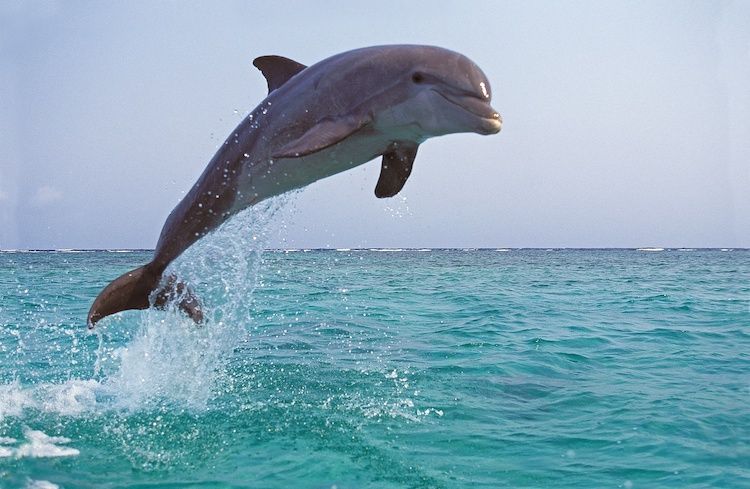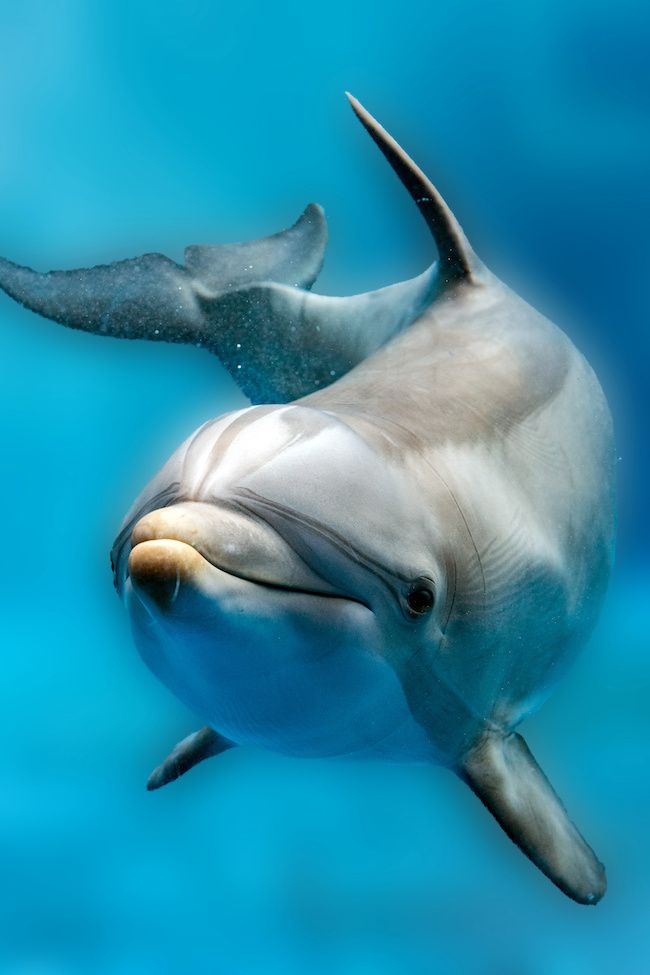
The dolphin is a marine mammal belonging to the order Cetacea, with many species found worldwide, including the Martinique dolphin. These fascinating animals are known for their intelligence, sociability, and incredible agility in the water. In this article, we will explore the characteristics and behavior of dolphins, as well as their diet and reproduction.
Physical Characteristics of the Dolphin
The dolphin has a streamlined body and smooth skin that allows it to move quickly and effortlessly in the water. The size of different species varies between 1.5 and 4 meters in length and can weigh up to 250 kg. Their color usually ranges from gray to dark blue on the back and lightens towards the belly.
Their head features a rostrum, or elongated snout, containing several rows of conical teeth. The eyes are placed on either side of the head, providing them with a wide field of vision. Dolphins also have a specialized organ, echolocation, which allows them to detect objects and prey in their environment by emitting sound waves.
The Dorsal Fin and Pectoral Fin
The dolphin has a dorsal fin located on its back, primarily used to stabilize the animal during its movements. The pectoral fins, on the other hand, allow precise maneuvering in the water and help maintain their body temperature through an adapted circulatory system

Dolphin Behavior
Dolphins are known to be social and curious animals. They live in groups called “pods,” typically consisting of about ten individuals but sometimes reaching several hundred. These groups are organized with a hierarchical and complex social structure.
Communication and Vocalizations
Communication is crucial within a dolphin group. It is primarily done through vocalizations, such as whistles, clicks, and sounds emitted through echolocation. Dolphins also use visual and tactile signals to interact with each other, such as fin movements or “touches” with their rostrum.
Play and Acrobatics
Dolphins exhibit playful behavior and are often seen playing with each other, floating objects, or even with other species, such as sea turtles. They also perform spectacular acrobatics, including leaps out of the water or spins, which may serve to strengthen social bonds within the group or simply for entertainment.

Dolphin Diet
Dolphins are carnivorous predators, primarily feeding on fish and cephalopods such as squid. Their hunting technique is highly sophisticated, relying on their intelligence and group cooperation. They can encircle a school of fish to concentrate it in a specific area, making it easier to capture prey.
Consumption of Crabs and Other Crustaceans
While fish make up the majority of their diet, some dolphin species also consume crabs and other crustaceans that they locate in the seabed. They use their powerful jaws to crush the shells of these animals and extract the meat.
Dolphin Reproduction and Life Cycle
Reproduction in dolphins is generally seasonal, although it can vary among species and regions. Females give birth to a single calf after a gestation period of 9 to 17 months, depending on the species. Births mostly occur during the warm seasons when food is abundant.
Breastfeeding and Weaning
Like all mammals, female dolphins nurse their calves. The calf feeds on maternal milk for several months to two years, depending on the species. Weaning is a gradual process, and the young dolphin starts consuming fish and other prey from its first month of life.
The Role of Males
Male dolphins play a significant role in reproduction and the education of the young. They can assist the female in protecting and educating the calf, teaching it hunting techniques, and guiding it during its initial group outings.
Longevity and Mortality
The lifespan of a dolphin varies by species but can reach up to 50 years for some. However, mortality among young dolphins is relatively high due to various predators (sharks, killer whales) and the dangers posed by their environment (fishing nets, pollution).